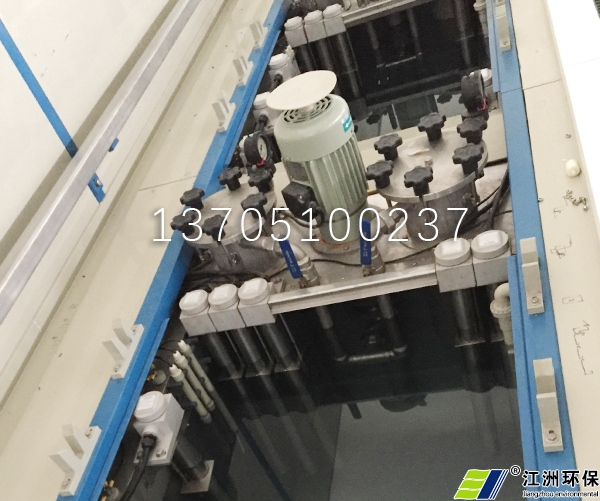Zero discharge of electroplating wastewater -The chemical method of electroplating wastewater treatment is to decompose toxic and harmful substances into non-toxic and harmless substances by redox reaction or neutralization precipitation reaction, or directly remove heavy metals from wastewater by precipitation or flotation.
1. Precipitation method
(1) Neutralization precipitation method. Alkali is added to the wastewater containing heavy metals for neutralization reaction, so that heavy metals can be separated in the form of insoluble hydroxide precipitation. Neutralization sedimentation method is simple in operation and is a commonly used method for wastewater treatment.
(2) Sulfide precipitation method. The method of removing heavy metal ions in wastewater by adding sulfide to generate sulfide precipitation. Compared with neutralization precipitation method, sulfide precipitation method has the following advantages: the solubility of heavy metal sulfide is lower than that of its hydroxide, the reaction pH value is between 7 and 9, and the treated wastewater generally does not need neutralization, so the treatment effect is better. However, the disadvantage of sulfide precipitation method is that sulfide precipitation particles are small and easy to form colloids. Sulfide precipitation remains in water and generates gas when encountering acid, which may cause secondary pollution.
(3) Chelating precipitation method. High molecular heavy metal capture and precipitation agent (DTCR) reacts rapidly with heavy metal ions such as Hg2+, Cd2+, Cu2+, Pb2+, Mn2+, Ni2+, Zn2+and Cr3+in wastewater at room temperature to generate insoluble chelate salts, and then a small amount of organic or (and) inorganic flocculants are added to form flocculent sedimentation, so as to achieve the purpose of capturing and removing heavy metals. The characteristics of DTCR series medicaments for electroplating wastewater treatment are that they can remove multiple heavy metal ions at the same time, and can also play a good removal effect in the case of heavy metal ions existing in the form of complex salts. The removal of colloidal heavy metals is not affected by coexisting salts, and has a good development prospect.

2. Oxidation method
The toxic substances in electroplating wastewater are oxidized to non-toxic or low toxic substances by adding oxidants, Electroplating wastewater treatment equipment It is mainly used to treat CN -, Fe2+, Mn2+low valence ions in wastewater, various organic substances causing chromaticity, obscurity and smell, and pathogenic microorganisms. For example, when treating cyanide containing wastewater, hypochlorite is often used to oxidize the cyanide ion under alkaline conditions to decompose it into low toxic cyanate, and then further degrade it into non-toxic carbon dioxide and nitrogen.
3. Chemical reduction
In the treatment of electroplating wastewater by chemical reduction method, Z is typical of the treatment of chromium containing wastewater. The method is to add reducing agents FeS04, NaHS03, Na2S03, S02 or iron powder into the wastewater to reduce Cr (Ⅵ) to Cr (III), and then add NaOH or lime milk for precipitation and separation. The advantages of this method are simple equipment, less investment and large treatment capacity, but secondary pollution caused by sediment sludge should be prevented.
Secondary treatment is to use a biological treatment method and some chemical methods to remove the degradable organics and some colloidal pollutants in the wastewater. After secondary treatment, the removal rate of BOD in the wastewater can reach 80 to 90%, that is, the total amount of BOD can be less than 30mg/L. The water after secondary treatment can generally meet the agricultural irrigation standards and wastewater discharge standards, so secondary treatment is a main body of wastewater treatment. However, there is still a certain amount of suspended matter, dissolved organic matter, dissolved inorganic matter, nitrogen, phosphorus and other algal value-added nutrients that cannot be decomposed by organisms, and viruses and bacteria in the secondary treated water. Therefore, it can not meet a relatively high discharge standard. If the river with relatively small flow and poor dilution capacity is discharged after treatment, it may cause pollution, and it can not be directly used as a make-up water source for tap water, industrial water and groundwater.





